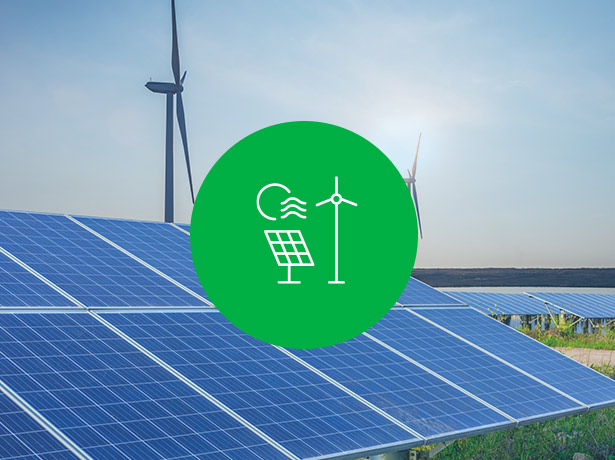To understand scopes 1, 2, and 3, it’s important to first understand where these terms are commonly used in the sustainability space – greenhouse gas (GHG) inventories. More specifically, this terminology is used within the World Resources Institute’s GHG Protocol, acknowledged as the gold standard for calculating GHG emissions and most frequently used guidance on the planet. GHG inventories, also known as carbon footprints, are a comprehensive assessment of an organization’s share of impacts on the environment, specifically impacts associated with the release of greenhouse gases (i.e., carbon dioxide, methane, nitrous oxide, etc.) into the atmosphere. As there are multiple sources from which GHG gases originate, these emissions are categorized into three distinct scopes for several reasons – to provide consistency and clarity for reporting purposes as well as aim to minimize double counting by partner organizations.
Scope 1:
Scope 1 emissions are a critical component of a company’s carbon footprint as they are the only direct source of greenhouse emissions originating from sources under an entity's operational control. Think of scope 1 emissions as the foundational pillar, impacts of which a company is wholly responsible for. Scope 1 emissions vary widely based on the type of industry, but generally center around impacts associated with the company’s facilities and vehicle fleets.
Scope 1 emissions typically arise from activities such as on-site combustion of fossil fuels in stationary sources like boilers and furnaces, as well as from mobile sources like gas and diesel used in vehicles owned or operated by the company. Additionally, scope 1 emissions may include emissions from industrial processes and any onsite chemical reactions, including those generated by agricultural activities (i.e., enteric fermentation in livestock aka cow burps!).
Scope 2:
Scope 2 emissions refer to indirect greenhouse gases from the energy generation that a company purchases to run the company’s facilities and operations. To simplify the concept, these emissions are outside of the organization’s control, created by an external supplier, typically in the form of electricity, steam, heat, or cooling, and are necessary to run the company’s business.
The most common scope 2 emissions source is from purchased electricity that’s used in the company’s buildings, specifically the emissions caused by the generation of that electricity by the local power provider. Consequently, scope 2 emissions are often influenced by factors such as the energy mix of the local grid and the efficiency of energy generation technologies utilized by the company’s suppliers.
Scope 3:
Scope 3 emissions refer to all other indirect greenhouse gas emissions that occur within a company’s value chain, including both upstream and downstream sources that are not directly owned or controlled by the company. Essentially, scope 3 captures the full extent of a company’s carbon footprint, evaluating emissions across the entire lifecycle of its products and services, as well as capturing evolving and shifting business ventures. As we dig into the 15 categories, it’s clear that measuring and managing scope 3 often presents significant challenges due to the complexity of the supply chains required, the tracking capability of an organization, as well as the vast multitude of stakeholders that must be engaged in the process.
Scope 3 is broken into 15 categories to best classify emissions sources that are relevant and material to the company. Below is a snippet of what each of the 15 categories covers:
- Purchased Goods and Services (PG&S)– Commonly referred to as PG&S, this category captures the emissions associated with the procurement of products, materials, and services from a company’s suppliers. Many times, this is the most material category for companies selling manufactured goods and is the one that has the largest impact on Scope 3 overall.
- Capital Goods – Commonly referred to as Capital Expenditure, or CapEx, this category captures the emissions associated with the acquisition and use of capitalized equipment and infrastructure on a company’s balance sheet.
- Fuel- and energy-related activities – This category covers all emissions associated with the consumption of energy and fuels that is not included in scope 1 or 2. Most commonly, this category focuses on the emissions associated with the actual generation of electricity from a power provider, as opposed to the consumption of that electricity (which would fall under scope 2).
- Upstream transportation and distribution – This category captures emissions from the transportation and distribution of goods and materials from suppliers to the company.
- Waste generated in operations – This category calculates emissions from the various waste disposal and treatment activities within a company’s direct operations.
- Business travel – This category captures all employee travel routes for work-related purposes, including flights, hotel stays, car rentals, trains, ride-shares, etc.
- Employee commuting – This category evaluates the emissions associated with employees’ travel to and from the workplace, varying in impact depending on the mode of transportation.
- Upstream leased assets – For leased assets not directly owned by the company, this category captures the associated emissions for buildings, equipment, and vehicles that are essential to the company’s operations.
- Downstream transportation and distribution – This category captures emissions associated with the transportation and distribution of products and services from the company to its customers.
- Processing of sold products – When a company sells an unfinished product, this category captures the emissions associated with the transformation or processing of that product for its end-use.
- Use of sold products – If a product sold by the company requires energy to function or ongoing maintenance, this category captures the emissions associated with the use of that product throughout its lifetime (i.e., the electricity consumption of a speaker).
- End-of-life treatment of sold products – As a product reaches the end of its useful life, this category captures the emissions associated with the disposal, recycling, or treatment of that product.
- Downstream leased assets – This category evaluations the emissions associated with the use of a leased asset by a customer. For example, if a company leases an apartment building, the tenant’s energy consumption would fall under the reporting company’s downstream leased assets.
- Franchises – This category calculates the emissions from any franchise operations associated with the reporting company, particularly the energy consumption and waste generation from those franchises.
- Investments – This category consolidates the scope 1 and scope 2 data of any investment activities from the company, most commonly focused on financing ventures.
The following visual directly from the World Resource Institute’s GHG Protocol is extremely helpful in understand scopes 1, 2, and 3.

Source: WRI/WBCSD GHG Protocol Corporate Value Chain (Scope 3) Accounting and Reporting Standard.


